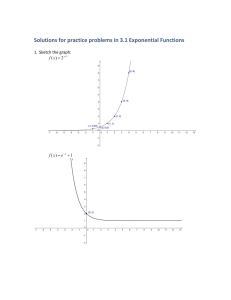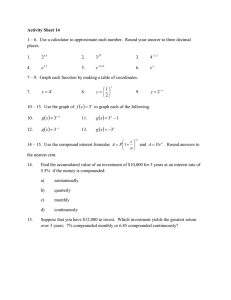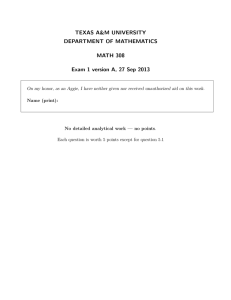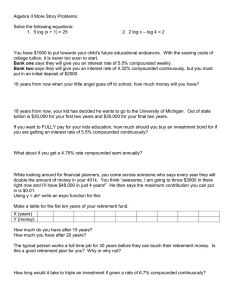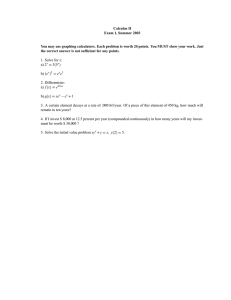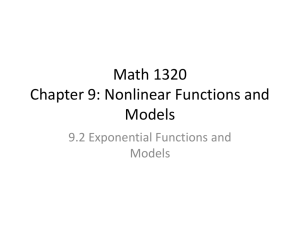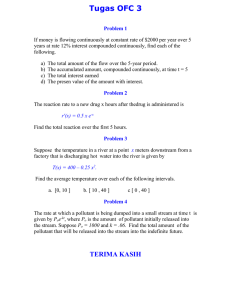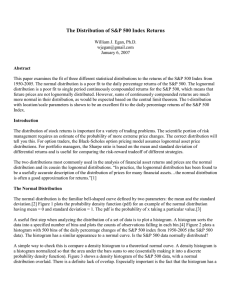Exponential and Logarithmic Functions
advertisement
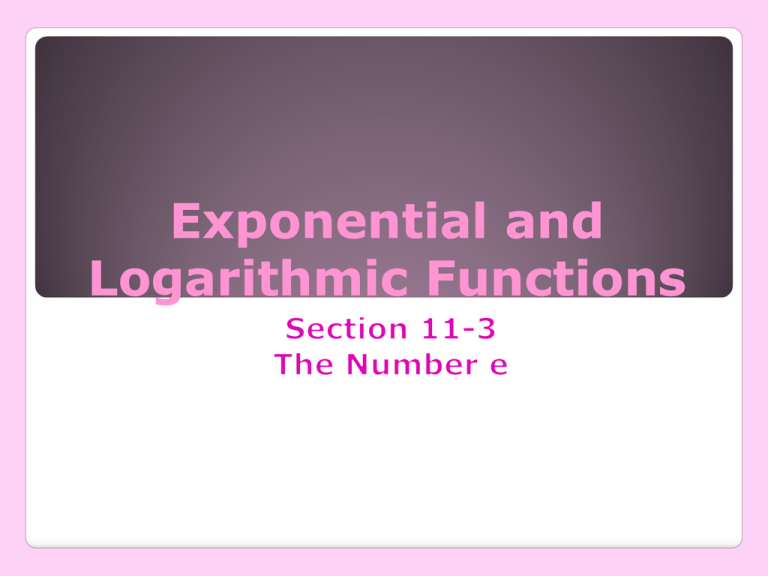
Exponential and Logarithmic Functions The The number e number e is like It is transcendental. It cannot occur as the root of any polynomial function with rational coefficients. e is approximately 2.718 Exponential Growth or Decay in terms of e Example # 1 According to Newton, a beaker of liquid cools exponentially when removed from a source of heat. Assume that the initial temperature T is 90 degrees F and that k = .275. Write a function to model the rate at which the liquid cools. 2. Find the temperature T of the liquid after 4 minutes (t) 3. Graph the function and use the graph to verify your answer in #2 3. Solution: kt 1. T = T1e .275 ( 4 ) 2. T = (9 0 )e ≈ 3 0 d eg rees F 1. Continuously Compounded Interest Some banks offer accounts that compound the interest continuously. The formula for finding continuously compounded interest is different from the one used for interest that is compounded a specific number of times each year. Example #2 Compare the balance after 30 years of a $15,000 investment earning 12% interest compounded continuously to the same investment compounded quarterly. . 1 2( 3 0 ) Continuously: A = 15000 e 4( 30) Quarterly: A = 15000 ( 1+ .12/4) = $520,664.81 = $548,973.52 % of change: (548973.52-520664.81)/520664.81 =28308.71/520664.81=.05437 or 5.44% more HW # 27 Section 11-3 Pp. 714-717 #6,8,10,11,18,23
